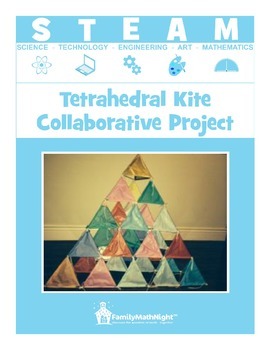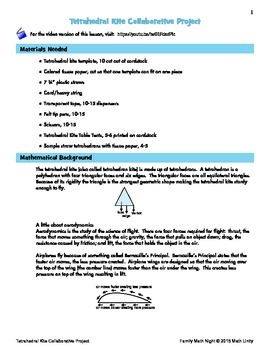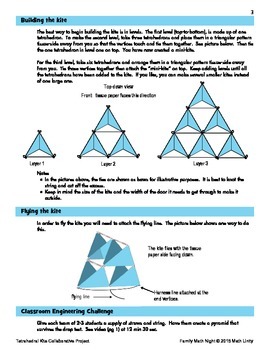STEAM: Tetrahedral Kite Collaborative Project
- PDF
What educators are saying
Description
Get kids excited about science, technology, engineering, art, and mathematics (STEAM) with this fun hands-on collaborative project. Typically done during a Family Math Night event, this project can also be done in the classroom. The best part is, each person is individually represented in the final product!
Participants create individual tetrahedrons using straws, string and tissue paper that are used to build a tetrahedral kite. The lesson includes the mathematical background with a focus on geometry in addition to a beginning introduction to aerodynamics.
Included in the lesson plan:
• list of materials needed
• mathematical background
• introduction to aerodynamics
• mathematical and scientific vocabulary
• table tent with step-by-step directions
• tetrahedron net
• classroom engineering challenge
• link to the video version of the lesson
More great STEAM and Family Math Night Collaborative Projects
If you're interested in other ideas for your Family Math Night events, I have a lot of them! Check out my blog, pinterest page, website or YouTube Channel. And if you have questions, let me know!
Family Math Night YouTube Channel
Wishing you a successful Family Math Night event!
Karyn
karyn@FamilyMathNight.com





